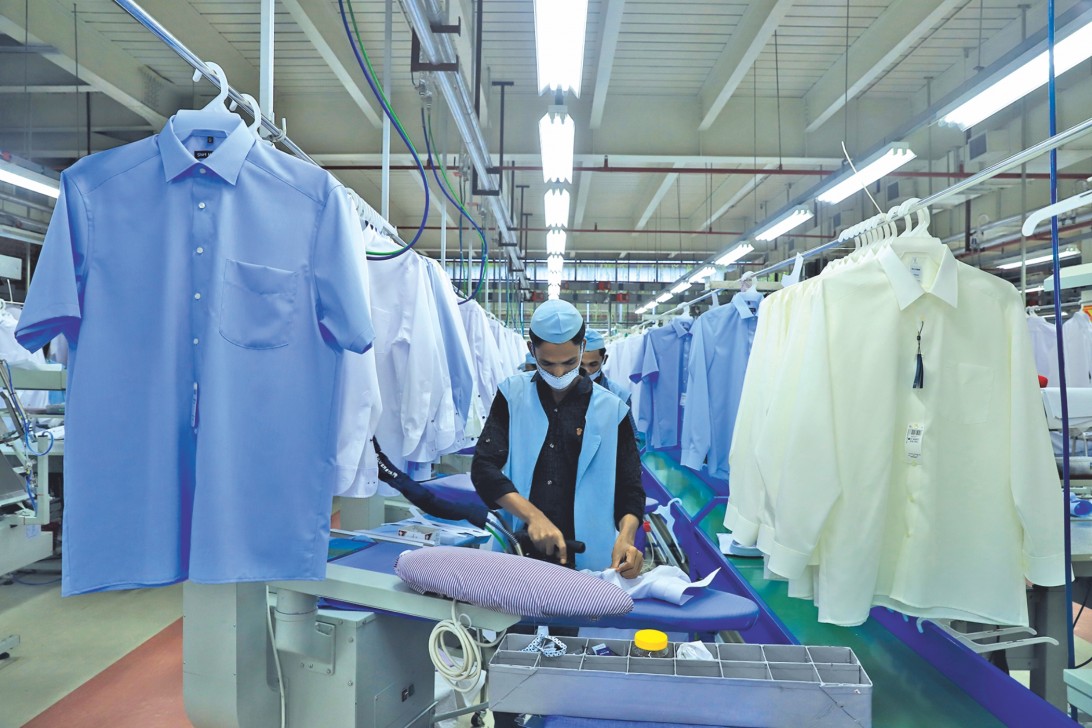Listed textile, RMG companies in a tight spot

Stock market data depicts a sorry picture of the textile and garment companies, depriving thousands of investors of expected dividends from the sector that accounted for 84 percent of Bangladesh’s exports last fiscal year.
Analysing the data of 36 listed companies for 2011-2018 period, The Daily Star found that their net profits nosedived to Tk 341 crore in 2018 from over Tk 1,252 crore eight years ago.
Entrepreneurs blamed higher cost of production, over capacity, competition, exchange rate and lower prices from international buyers for the situation.
But an analyst raised questions about the quality of financial reports these companies make public.
Data showed of the 36 listed textile and garment companies nine incurred losses last year. But all of them except one had logged profits in 2011. After 2011 another 19 textile companies have been listed on the DSE to take the tally to 55.
An aggrieved investor said he bought some shares of Generation Next Fashions at Tk 8 per share against Tk 10 face value on October 1 last year seeing the company’s dividend paying trend, which is no less than 10 percent a year.
The investor lost half of the share value in just one year and the price further fell to just Tk 2.4 a share on Thursday.
“Now I don’t know how long it will take to get my investment back,” said the investor wishing not to be named.
He is not alone; there are thousands of investors as public shareholders accounted for over 60 percent of the stakes in the company while sponsors shareholders have less than 14 percent shares. Conditions of the remaining companies are more or less the same as Generation Next as share price of 19 of the 55 firms trading at below their face value.
Khondaker Golam Moazzem, research director of the Centre for Policy Dialogue, said the listed companies’ data seem doubtful due to poor financial reporting, so it may not represent the whole sector.
Many companies expanded their business seeing a lucrative growth in the sector and their sales volume soared and so did their revenue.
“However, it is true that the clothing sector suffers for higher cost to meet compliance after Rana Plaza incident and the price of per unit dropped in the international market.”
In 2013, the building collapsed in Savar on the outskirts of the capital, leaving at least 1,138 people dead and 2,500 others injured in the country’s deadliest industrial accident.
Since then, local garment entrepreneurs put more than $1 billion to remediate the factories for preventing such tragedies in future.
Overall, the sector is suffering from lower profits, said Rubana Huq, president of the Bangladesh Garment Manufacturers and Exporters Association.
The cost of production of apparel items increased 30 percent between 2014 and 2018. Furthermore, the minimum wage of garment workers has increased 51 percent since December last year, she said.
Between fiscal years 2015-16 and 2018-19, the industry’s value addition has gone down 1.61 percent though apparel exports have increased from $28.10 billion to $34.13 billion during the period.
“Competitive countries have devalued their currency but we don’t, so we are lagging behind in the competition,” Huq added.
She also blamed the unplanned expansion in the industry for the retailers’ accepting low prices.
As many as 39 percent of the garment manufacturers are selling garment items to buyers at prices lower than the production costs now, according to a survey of the Fair Wear Foundation, an Amsterdam-based organisation that works to improve labour conditions in garment factories.
Textile companies’ main input is fuel and captive power, said Mohammad Ali Khokon, president of the Bangladesh Textile Mills Association. “The price of captive power has increased 435 percent since 2012.”
The interest rate of the banking sector also rose, so bank loan-dependent companies are hurt by the higher interest rate, said Khokon, also the managing director of Maksons Spinning Mills.
The price of product also fell in the last two years, which hurt the textile makers’ profit, he added.
If the suppliers do not accept prices below their production costs, they will lose everything as they will have to pay the workers at the end of the month without any production in factories, industry insiders said.
Textile sector’s performance is the worst in the market, so investors are disappointed with the sector, said a top official of a leading asset management company.
At present, 15 textile companies out of the total 55 are ranked as junk stocks due to their failure to provide dividends or hold annual general meeting or shuttering of their factory.
